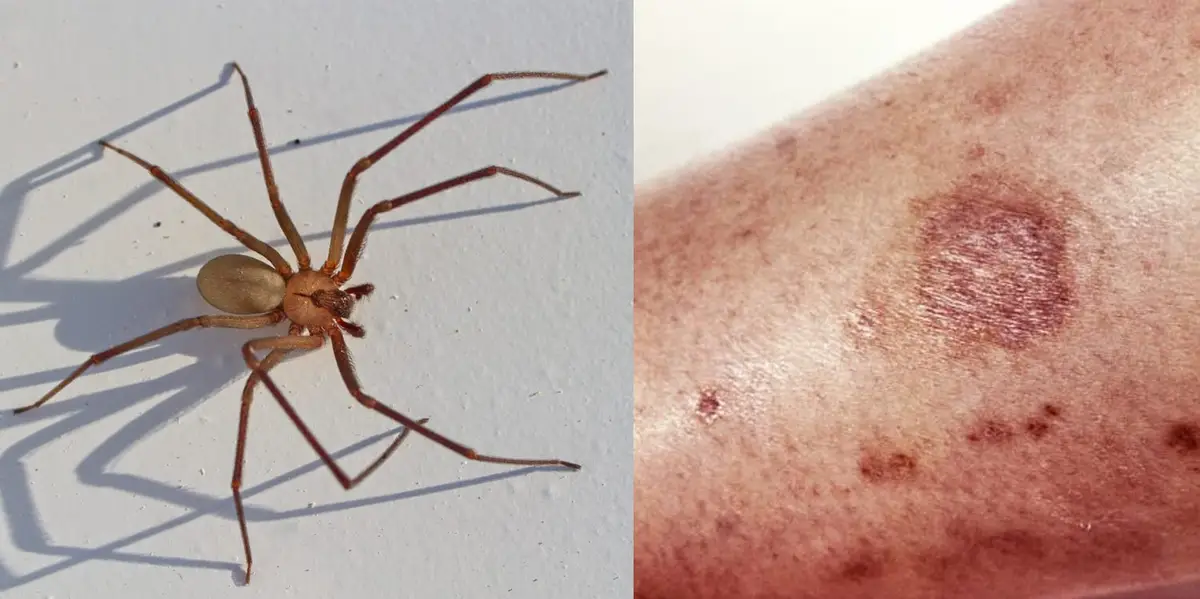Spider bites can be concerning, especially when they lead to symptoms that cause pain, swelling, or infection. This article will provide you with comprehensive information on spider bites, illustrated with detailed descriptions and images of spider bites to help you identify and understand them better. Whether you’ve been bitten by a spider or are just curious about the potential risks, this guide will serve as a valuable resource.
What Are Spider Bites?
Spider bites occur when a spider injects venom into the skin. Most spider bites are harmless, causing only minor irritation. However, some species can cause severe reactions. Spider bites can resemble other insect bites or skin conditions, making it crucial to identify them accurately.
How Do Spider Bites Happen?
Spider bites typically happen when a person inadvertently disturbs a spider, such as when reaching into dark corners, putting on clothing, or sitting on surfaces where spiders might be hiding. Most spiders do not actively seek out humans to bite; they bite only when they feel threatened.
Common Symptoms of Spider Bites
Symptoms can vary based on the spider species and the individual’s reaction. Common symptoms of spider bites include:
- Redness and Swelling: The area around the bite may become red and swollen.
- Pain or Itching: Many people experience pain, itching, or a burning sensation at the site of the bite.
- Blisters: Some bites may develop blisters or welts.
- Systemic Symptoms: In more severe cases, individuals may experience fever, chills, or muscle pain.
Types of Spiders and Their Bites
While there are thousands of spider species, only a few are known to cause significant health issues. Here are some of the most notable spiders that can deliver bites of concern:
1. Brown Recluse Spider
The brown recluse spider is known for its violin-shaped marking on its back and its venom, which can cause severe tissue damage. Images of spider bites from a brown recluse often show a necrotic area around the bite.
Symptoms:
- Initial pain that increases over time
- Formation of a blister, leading to an ulcer
- Fever and chills in some cases
2. Black Widow Spider
The black widow spider has a distinctive shiny black body and a red hourglass marking on its abdomen. Its bite can cause systemic symptoms due to the potent neurotoxin it injects.
Symptoms:
- Severe pain in the abdomen, back, or chest
- Muscle cramps
- Nausea and vomiting
3. Hobo Spider
The hobo spider, often mistaken for a brown recluse, is found in the Pacific Northwest. Its bites can cause skin lesions similar to those of the brown recluse.
Symptoms:
- Redness and swelling at the bite site
- Possible necrosis, though this is debated among experts
4. Yellow Sac Spider
Yellow sac spiders are small and can be identified by their pale color and quick movement. Their bites can cause irritation similar to a mosquito bite.
Symptoms:
- Redness and itching
- Minor swelling
5. Tarantula
While tarantulas are not typically dangerous to humans, they can deliver painful bites that may cause local swelling and redness.
Symptoms:
- Local pain
- Minor swelling
Images of Spider Bites: Identification and Treatment
Understanding spider bites is crucial for proper treatment. Below are detailed descriptions and examples of what to look for when examining a bite.
How to Identify Spider Bites
When trying to identify a spider bite, consider the following factors:
- Appearance: Look for characteristics such as redness, swelling, and the presence of blisters or necrotic tissue.
- Location: Some spiders prefer specific habitats. For instance, the brown recluse is often found in dark, secluded places.
- Symptoms: Pay attention to any additional symptoms that may arise, such as fever or muscle pain.
Treatment for Spider Bites
Most spider bites can be treated at home. Here are some general steps to take if you suspect a spider bite:
- Clean the Area: Use soap and water to cleanse the bite area.
- Ice the Bite: Apply ice to reduce swelling and numb the pain.
- Pain Relief: Over-the-counter pain medications like ibuprofen or acetaminophen can help.
- Monitor Symptoms: Keep an eye on the bite for any signs of infection or worsening symptoms.
When to Seek Medical Attention
While most spider bites are harmless, certain symptoms warrant medical attention:
- Severe pain that does not subside
- Worsening redness or swelling
- Signs of infection (pus, fever)
- Difficulty breathing or swallowing
- Muscle cramps or severe systemic symptoms
Images of Spider Bites in Various Stages
Visual aids can be extremely helpful for identifying spider bites. Below are descriptions of common appearances of spider bites over time.
1. Initial Stage
In the first few hours after a spider bite, the affected area may appear red and slightly swollen. The bite might resemble a small puncture wound. Here, you can see an example of a typical spider bite in its initial stage, showing mild redness and minimal swelling.
2. Development Stage
Within 24 hours, symptoms can intensify. The area may become more swollen, and a blister can form. Here’s an image depicting a spider bite at this stage, characterized by increased swelling and the start of blister formation.
3. Necrotic Stage
In severe cases, particularly with bites from brown recluse or black widow spiders, the bite area may begin to show signs of tissue damage or necrosis. This stage can be alarming, as the skin can turn black and may develop an ulcer. An image of this stage reveals the severity of tissue damage, which requires immediate medical attention.
4. Healing Stage
After appropriate treatment, the bite will start to heal. The redness will decrease, and the swelling will subside. A healing spider bite might still show discoloration but will eventually fade over time. Images of healing spider bites illustrate the recovery process, which varies from person to person.
Prevention of Spider Bites
Taking precautions can significantly reduce the risk of spider bites. Here are some practical tips:
- Keep Your Home Clean: Regularly vacuum and dust to eliminate spider habitats.
- Seal Cracks and Gaps: Ensure windows and doors are well-sealed to prevent spiders from entering.
- Use Insect Repellent: When spending time outdoors, especially in wooded areas, apply insect repellent.
- Wear Protective Clothing: When gardening or working in areas where spiders may dwell, wear long sleeves and gloves.
Myths and Facts About Spider Bites
Understanding spider bites is often clouded by myths. Here are some common misconceptions:
Myth 1: All Spiders Are Dangerous
Fact: Most spiders are harmless to humans and actually help control insect populations.
Myth 2: Spider Bites Always Leave a Mark
Fact: Some people may not show any symptoms or visible marks after a spider bite.
Myth 3: You Can Always Identify the Spider That Bit You
Fact: It’s often difficult to identify the spider that caused the bite, especially if the bite occurs while you’re not observing.
Conclusion
Images of spider bites can provide valuable insights into how to recognize and understand the effects of spider bites. While most bites are harmless, being able to identify concerning symptoms is vital for ensuring proper treatment. By understanding the types of spiders and their bites, as well as taking preventive measures, you can reduce the likelihood of experiencing a painful spider bite. Always consult a healthcare professional if you have concerns about a bite or if symptoms worsen.
This article aims to equip you with the knowledge needed to navigate the complexities of spider bites effectively. Stay informed, stay safe, and remember that knowledge is your best defense against unwanted encounters with spiders.













